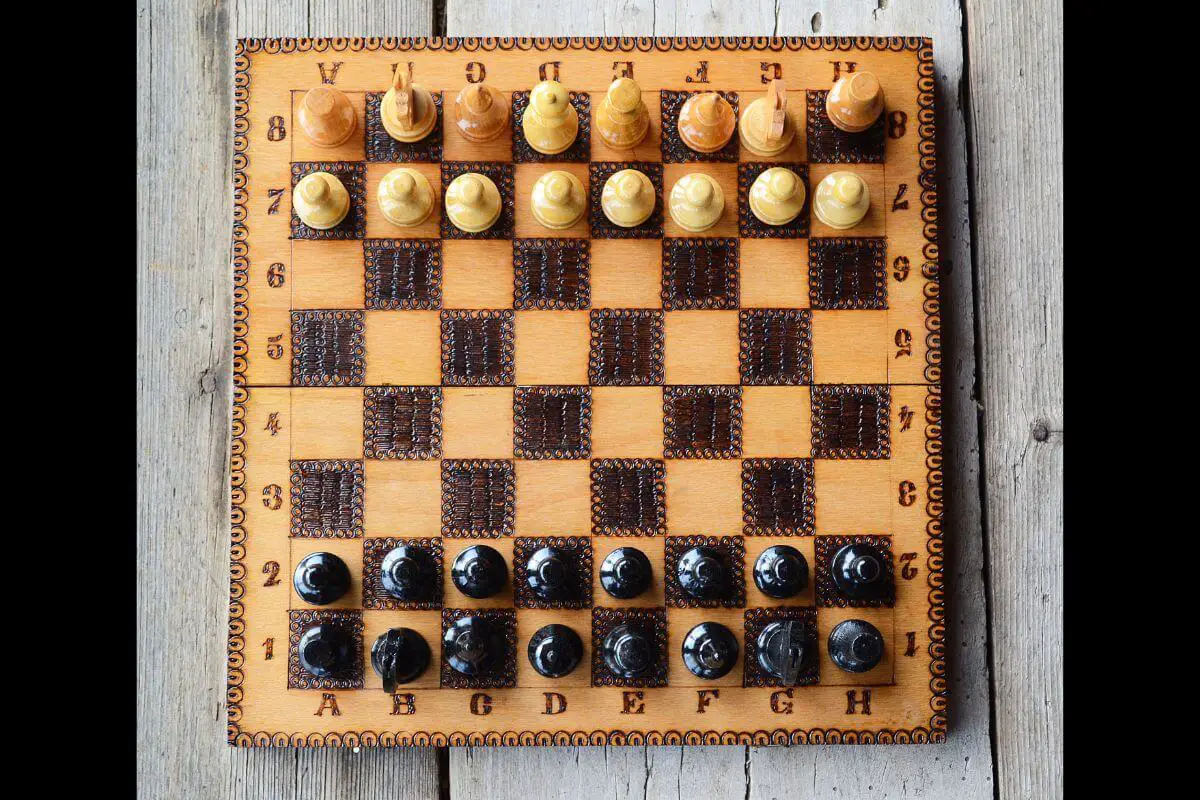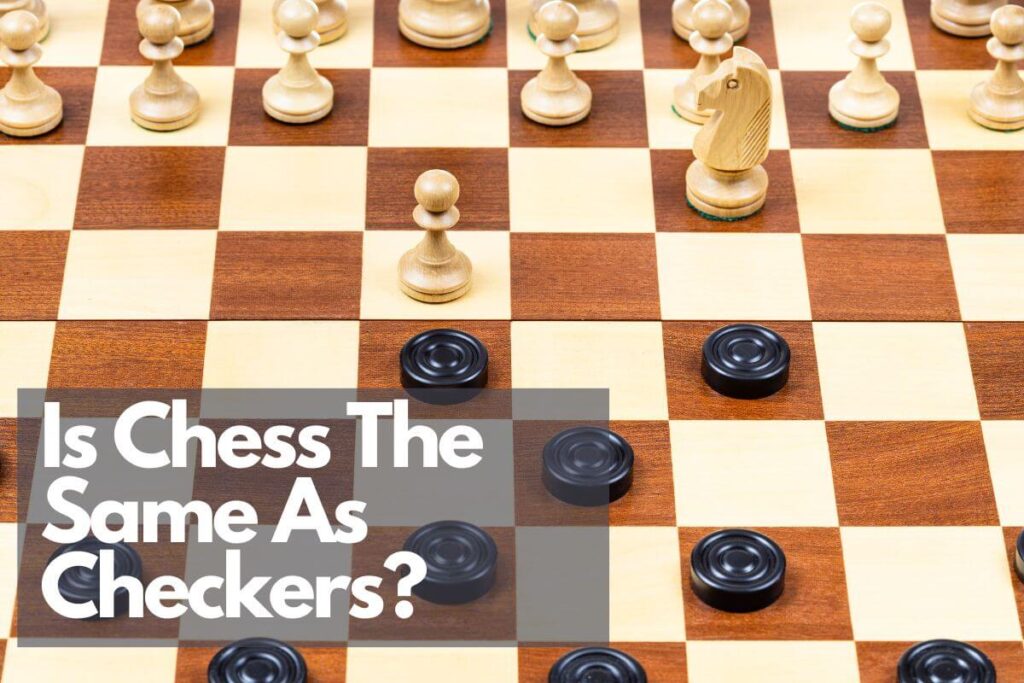Chess and checkers are both strategy games played on a checkered board, but they have different objectives and gameplay styles. Here are the main differences between the two:
Objective
The primary objective of each game is different:
- Chess: The main goal in chess is to capture or ‘check’ the rival king. This involves strategically moving pieces to threaten the opponent’s king and force them into a disadvantageous position.
- Checkers: The objective of checkers is to get rid of all your opponent’s pieces. This is achieved by jumping opponent pieces diagonally to capture them, with the ultimate goal of capturing all 12 of your opponent’s pieces before capturing all of your own pieces.
Gameplay
The gameplay of each game is distinct:
- Chess: Chess pieces have more complex movements and can move in various ways. For example, the rook can move horizontally or vertically, the bishop can move diagonally, and the knight can move in an L-shape. Each piece has unique abilities, and players must strategically use their pieces to outmaneuver their opponent.
- Checkers: Checkers pieces have simpler movements and can only move diagonally. Players move one piece at a time, and the game is turn-based. Jumping over opponent pieces captures them, and capturing all of the opponent’s pieces wins the game.
Checkers

Chess

Difficulty
While both games are considered difficult to master, some players argue that chess is more challenging due to the complexity of its pieces and their movements.
Chess involves more decision-making and strategic planning, as each piece has unique abilities and the board is larger, with more pieces on it.
In contrast, checkers has a simpler board and pieces with fewer movements, making it easier to understand and play.
However, the game’s simplicity can make it more challenging to master, as players must use a limited set of tactics and strategies to capture all of their opponent’s pieces.
While chess and checkers share some similarities, such as being played on a checkered board and having pieces that can be captured, they are distinct games with different strategies and objectives. Each game offers unique challenges and experiences for players, making them interesting and worthwhile pursuits.
How do chess and checkers differ in terms of strategy and tactics?
Chess and checkers are both strategy games, but they differ in terms of strategy and tactics. Here are some key differences between the two:
Chess:
- Greater complexity: Chess is more complex than checkers, with more pieces and a larger board
- Goal: The goal of chess is to checkmate, which occurs when a player threatens the opponent’s king with capture
- Single movements: Chess pieces move in various ways, such as straight lines, diagonals, and leaps, allowing for more strategic movement
- Greater strategic depth: Chess involves more planning and anticipation, as players need to consider the potential consequences of each move
Checkers:
- Simpler rules: Checkers has fewer pieces and a smaller board, making the game more straightforward
- Goal: The goal of checkers is to capture all of the opponent’s pieces
- Limited movements: Checkers pieces move diagonally and only one space at a time, with some pieces having the ability to jump over other pieces
- Fewer strategic options: Checkers is primarily a skill game, and there is less room for random elements compared to chess
While both games share some similarities, such as being played on a checkered board and having pieces that can be captured, the differences in complexity, strategic depth, and movement rules make chess and checkers distinct games with unique challenges and strategies.
What are the different types of chess and checkers?
There are various types of chess and checkers, each with its own set of rules and gameplay. Some of the more popular variants include:
Chess:
- Standard chess: The most common form of chess, played with 16 pieces per side on a 6×8 board
- Chess960: A version of chess played with nine pieces per side on a 8×8 board
- Fischer Random chess: A variant where the starting position is randomized, with each player controlling a unique set of pieces
- Bughouse chess: A team game where each player controls a king and two knights, trying to capture the opponent’s kings
Checkers:
- Standard checkers: The most common form of checkers, played with 12 pieces per side on a 6×12 board
- International checkers: A version of checkers played with 12 pieces per side on a 6×12 board, with the long-distance diagonals removed
- American checkers: Similar to international checkers, but with a few minor differences in the starting position
- Russian checkers: Played with 12 pieces per side on a 6×12 board, but with different movement rules for some pieces
There are also various cross-over games that combine elements of chess and checkers, such as:
- Cheskers: A game played on the black squares of the board only, starting with the standard checkers setup and using checkers pieces with the movement rules of chess pieces
- Chaturanga: An ancient Indian board game that is considered one of the precursors of modern chess and checkers
These variants and cross-over games offer different challenges and strategies, allowing players to explore various forms of chess and checkers beyond the standard versions.
What are the basic rules of chess and checkers?
In chess, the game is played on an 8×8 grid. Each player starts with 16 pieces: one king, one queen, two rooks, two knights, two bishops, and eight pawns. The basic rules of chess include:
- Movement: Each type of chess piece moves in a unique way. For example, the rook moves horizontally or vertically, the bishop moves diagonally, and the knight moves in an L-shape. The queen can move in any direction, and the king can move in any direction but only one square at a time.
- Objective: The primary objective is to checkmate the opponent’s king. This means putting the king into a position where it cannot escape capture.
- Special Moves: Castling, en passant, and pawn promotion are special moves in chess that have specific rules governing their use.
- Turns: Players take turns moving one piece at a time, with the player controlling the white pieces making the first move.
Basic Rules of Checkers
Checkers, also known as draughts, is played on an 8×8 grid with 12 pieces per player. The basic rules of checkers include:
- Movement: Checkers pieces can only move diagonally on the dark squares. At the start of the game, checkers can only move forward, meaning toward the opposite player’s side. If there is an opponent’s piece diagonally in front of a checker, and an empty space behind the opponent’s piece, the checker can jump over the opponent’s piece and capture it.
- Kinged Pieces: When a checker reaches the opponent’s back row, it becomes a “king” and gains the ability to move and capture both forward and backward.
- Objective: The primary objective is to capture all of the opponent’s pieces or to block them so they cannot move.
- Turns: Players take turns moving one piece at a time, with the player controlling the darker pieces making the first move.
In conclusion, while both chess and checkers are played on an 8×8 grid and involve moving pieces, they have different rules, objectives, and gameplay styles, making each game unique and enjoyable in its own right.


